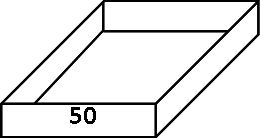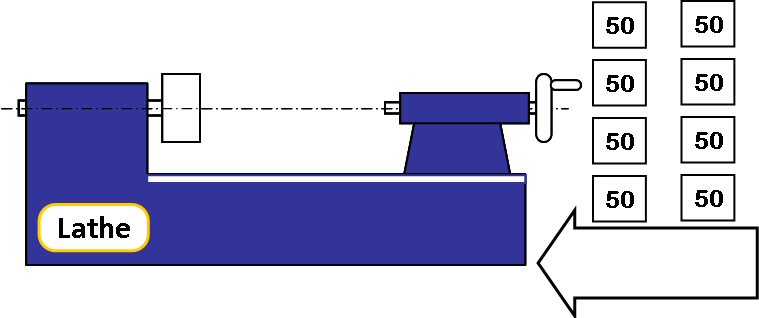5.18 - KanBan
Kanban (in Japanese - ticket or token) is shorthand to describe pull-type material control systems, (i.e. systems that pull materials through the manufacturing process in the order needed) just in time.
This is a typical Kanban card:-
Quantity: |
50 |
Shaft - Part No: |
89372 |
From: |
Turning |
To: |
Grinding |
It tells the operator:-
- How many
- The part description and number
- Where they came from
- Where they go next
The Kanban card is often fixed to a box that will carry the parts - so the box can be regard as a Kanban also. |

|

|
When the Kanban arrives empty at a machine it tells the operator to make the number on the Kanban and no more. |

|
If 8 arrive, it tells the operator to make 400 and no more. |
Usually the empty boxes are exchanged for full ones. The box is a re-circulating works order to eliminate paperwork.
Designing the Kanban in this way ensures that:-
- The lead time is kept to a minimum
- Only one journey is made to bring the empties and take the full containers.
- To use simple robust Kanban we need to:-
- Identify the regular runners and make special arrangements for repeaters and strangers.
- Level the schedule to make daily and sell daily
- Reduce the change over times on the machines
- Carefully design the system - simulate it and document it
- Train the people who will run it
- Monitor and improve it. Regularly audit it against the manufacturing strategy.